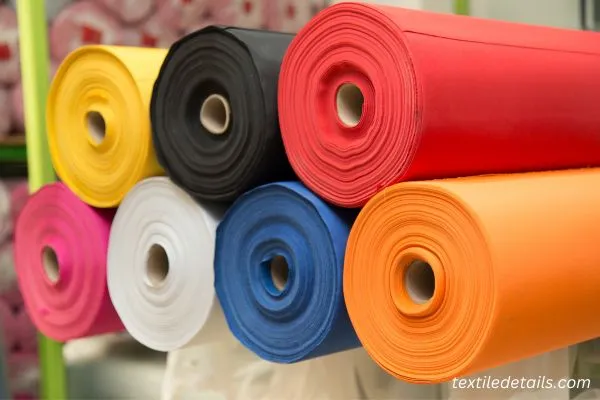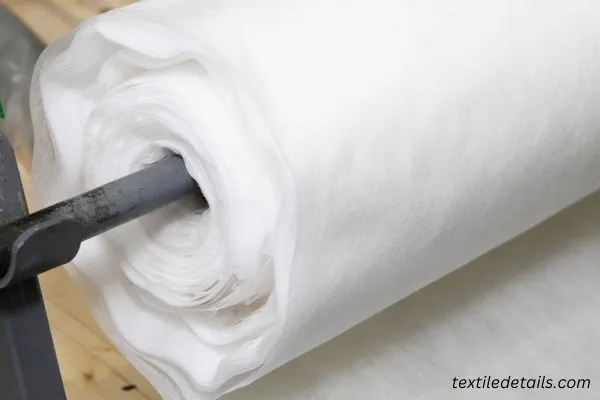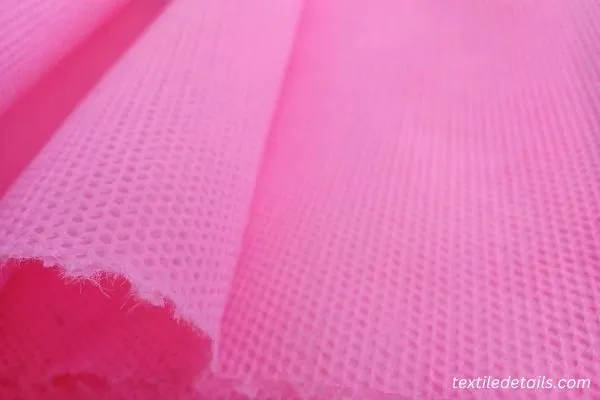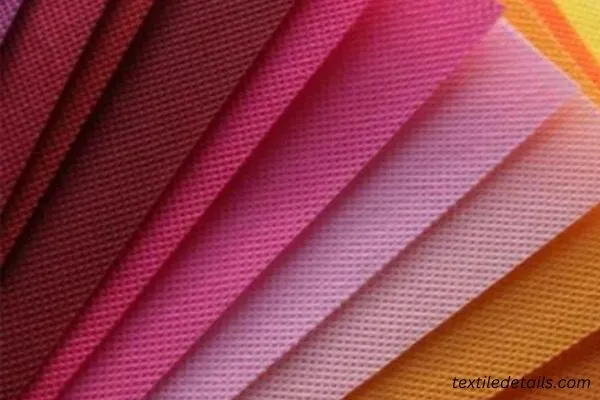Polypropylene or PP non woven fabric is a synthetic fabric transformed from propylene. It is an excellent fabric that is comfortable, durable, and breathable. PP non-woven fabrics are now widely used in the textile industry to provide various kinds of applications. In this article, we’ll discuss PP fabric in detail.

Table of Contents
What is PP Non Woven Fabric?
A type of synthetic technical textile fabric is called PP fabric and is also referred to as Polypropylene Fabric. PP In the textile industry, non-woven fabric is a word used to describe textiles that aren’t knitted or woven. Polypropylene [PP] polymer fiber, a type of non-woven material, is used to make this fabric. As a result, we can define PP as a non-woven category that also includes fabric.

An artificial fiber made from 85% propylene is called polypropylene. PP non-woven fabric has a number of unique qualities and functions, including sturdiness, softness, comfort, lightfastness, and cleaning ease. Multiple textile products, including industrial, upholstery, and other uses, are made using polypropylene non-woven fabric.

What is PP Non-Woven Fabric Made of?
A type of synthetic non-woven fabric composed of polypropylene polymer is known as polypropylene, or PP. Propylene, which is used to make oil and natural gas, accounts for 85% to 85% of the push behind this polymer. It is a type of synthetic fabric since the main components of this fabric are natural gas and oil.

Polypropylene is made by an extrusion method. This process creates a material with the appearance, feel, and quality of fabric through a number of chemical and heating activities. Let’s look at how PP non-woven fabric is made.
How is PP Non-Woven Fabric made?
The steps involved in making this non-woven fabric are listed below.
1st Step: Extraction of Propylene
Polypropylene polymer, which is produced from propylene, is mostly used for manufacturing PP non-woven fabrics. As a result, you have to first produce propylene. Oil and natural gas are used to produce a synthetic substance known as propylene. Propylene is made or obtained from oil and natural gas through the process of extrusion.

2nd Step: Creation of Polypropylene
The manufacture of polypropylene is the next step in this process of making PP fabrics. The first propylene produced is essentially a monomer, which makes up the majority of the polypropylene polymer. The monomer propylene is created as gas from oil products and then put through a process known as chain-growth polymerization to produce the polymer polypropylene.

3rd Step: Stringing and Mixing
When a lot of propylene monomers are linked, a solid plastic product is produced. Polypropylene polymer must be blended with a number of plasticizers, stabilizers, and fillers to produce a useful fabric. The molten Polypropylene is blended with these elements.

4th Step: Cooling and Remelting
The next step is cooling the molten Polypropylene. After the various components are combined with the molten polypropylene, the cooling process begins. In this instance, the molten polypropylene is cooled to make bricks or pellets. The bricks or pellets are then taken to a textile mill where they are remelted.

5th Step: Forming and Finishing
The polypropylene is then molded into sheets or let to cool in molds after that. When making sheets, the thin fibers are cut into the desired shape before being sewn or attached together to make apparel or diapers. Different industrial techniques are used to shape polypropylene into non-apparel products.

PP Non-Woven Fabric Properties
| Fabric name | Polypropylene [PP] Fabric |
| Material of fabric | Polypropylene [PP] polymer |
| Fabric Breathability | Excellent |
| Heat retention capability | Medium |
| Moisture-wicking Capabilities | High |
| Stretch ability | Excellent |
| Prone to bubbling | Medium |
| Washing temperatures | Cold |
| Commonly seen in | Backpacks, Military wear, Sportswear, N95 mask, diapers, Food packaging, tote bags, tapes, ropes, drinking straws |
PP Non-Woven Fabric Characteristics
Lightweight Fabric
Given a given weight, polypropylene produces a maximum amount of fabric. This is because of its low specific gravity. Because polypropylene fiber has a high yield, it gives significant bulk and coverage while being lighter. PP Non-Woven is the world’s lightest fabric, even more lightweight than water.

Breathable and Comfortable
This non-woven fabric’s breathability is also of great quality. PP Non-Woven is a highly breathable fabric. It is a really comfy piece of fabric and has outstanding breathability. Therefore, PP fabrics are used to make many types of apparel applications.

Moisture Absorption
Water is not a problem with polypropylene. After a 24-hour soak test, the moisture absorbs less than 0.01 percent of its weight in water. Polypropylene is therefore perfect for general submerging parcels when the fabric of the basket beneath needs to be shielded from several types of chemicals.

Chemical Resistance
The outstanding resistance to chemicals of this non-woven fabric is one of its best qualities. Most organic solvents, acids, and bases won’t harm polypropylene fabric. On the other hand, the fabric is at risk from oxidation reaction acids, chlorine hydrocarbons, and aromatics.

Thermal conductivity
None of the natural or synthetic fibers have a lower heat conductivity than PP non-woven fabric. Because PP threads are hydrophobic, they have excellent thermal or heat retention properties for longer times, which make them excellent insulators in clothing and help to keep the wearer warm and dry.

Application of PP Non-Woven Fabric
The non-woven fabric made from polypropylene, or PP, has many excellent characteristics and practical uses. Because of its exceptional durability, abrasion resistance, good breathability, non-absorption of dust, liquids, as well as stains, and simplicity of washing, it was even preferred over natural fibers. PP fabric is widely used in clothing applications where moisture transmission is necessary.

This fabric is also used to make durable trade show totes, braided backpacks, lunch bags, and coolers. Many of these bags are quilted to keep food warm or cold, and they are durable enough to withstand regular use. Physicians, nurses, and other hospital workers must use medical grade melt-blown N95 surgical masks cloth to protect themselves from COVID-19.

Another applying sector of PP Fabrics is electrical insulators in electronics. These and other uses for PP fabric include flexible packaging, rigid packaging, pipelines, food containers, bags, carpets, clear plastic, ropes, and concrete reinforcement. Additionally, clothing and diapers are produced from these non-woven fabrics.
